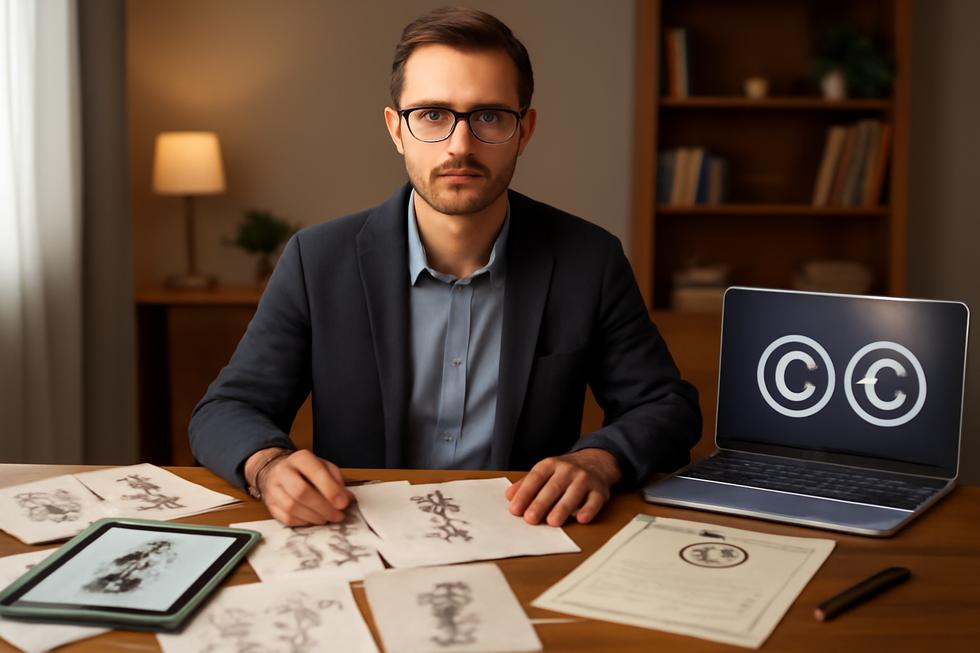Introduction
Protecting your original characters can be a critical part of building a strong brand identity and securing your business’s creative assets. Copyright protection for characters is granted automatically as soon as your creation is fixed in a tangible form—whether a sketch, a written description, or digital artwork. This immediate protection is invaluable because it requires no upfront payment or registration, offering a cost-effective way for business owners to safeguard their intellectual property. However, understanding the scope of this free protection, the advantages of formal registration, and the challenges posed by AI-generated content is vital for comprehensive security. From outlining clear steps to protect your characters to exploring enforcement options and documenting your creative process effectively, each chapter in this guide unpacks a key aspect of copyrighting a character without cost. Together, these insights equip business owners with the knowledge to confidently protect their character creations while navigating legal nuances.
Tables of Contents
Chapter 1: Understanding How to Copyright a Character for Free: Automatic Copyright Protection Upon Creation
- The Foundations of Automatic Copyright: How Creation Instantly Secures Your Character’s Rights
- The Power of Automatic Copyright: How Your Character Gains Protection Without Registration
- Navigating the Boundaries of Automatic Copyright: What Your Character’s Protection Actually Covers
- Navigating Copyright Challenges for AI-Generated Characters under Automatic Protection
Chapter 2: Steps to Protect Your Character for Free When You Copyright a Character
- Creating Tangible Proof: How Fixing Your Character Secures Free Copyright Protection
- Strengthening Your Character’s Ownership with Copyright Notices and Practical Documentation
- Establishing Concrete Proof: How to Secure Free Copyright Protection Through Thorough Documentation
- Harnessing Fair Use and Digital Platforms to Fortify Character Protection Without Cost
Chapter 3: The Role of Copyright Registration Versus Free Copyright of a Character
- Navigating Legal Strength and Enforcement: Why Registration Matters Beyond Automatic Copyright
- Navigating Economic and Commercial Realities: Registered Copyrights Versus Free Character Protection
- Navigating Copyright Protection Amidst AI and Digital Advances in Character Creation
- Balancing Cultural Sharing and Legal Protection: Societal and Global Views on Character Copyrights
Chapter 4: Limitations of Free Copyright: Challenges When You Copyright a Character for Free with AI-Generated Content
- Navigating Legal and Technological Barriers in AI-Generated Character Copyrights
- Navigating Economic Risks and Ownership Ambiguities in Free Copyright of AI-Generated Characters
- Unraveling Global Legal Challenges of Free Copyright on AI-Generated Characters
- Navigating Ethical Dilemmas and Ownership Ambiguities in AI-Generated Character Copyrights
Chapter 5: Legal Implications and Enforcement Options When You Copyright a Character for Free
- Understanding Your Exclusive Rights and Challenges When Copyrighting a Character for Free
- Navigating Enforcement Strategies and Legal Protections Without Formal Registration
- Navigating Fair Use and Non-Commercial Boundaries in Free Character Copyright Protection
- Effective Enforcement Tactics and Navigating Legal Challenges Without Formal Registration
Chapter 6: Practical Tips and Documentation Strategies for How to Copyright a Character for Free
- Thorough Documentation: Building a Solid Foundation to Protect Your Character’s Originality
- Establishing Proof of Creation Through Tangible Fixation and Digital Metadata
- Leveraging Public Sharing and Informal Documentation to Secure Your Character’s Copyright Without Registration
- Navigating Legal Complexities and Essential Limits When Protecting Your Character for Free
Chapter 1: Understanding How to Copyright a Character for Free: Automatic Copyright Protection Upon Creation
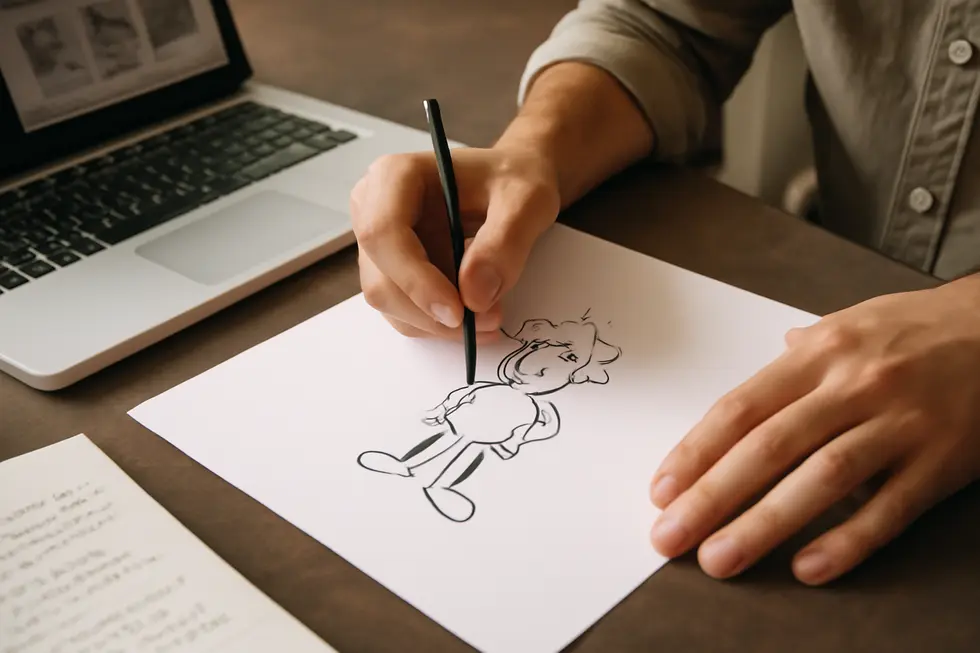
1. The Foundations of Automatic Copyright: How Creation Instantly Secures Your Character’s Rights
Automatic copyright protection begins the moment your character is fixed in a tangible form. This means when your creation exists as a drawing, a written profile, or a digital file, copyright protection is granted immediately without any need for registration or fees. The law safeguards your character’s unique expression—its design, personality, and backstory—so long as it is original and documented in some perceivable way. While formal registration is optional, maintaining dated drafts and notes is crucial to prove authorship if disputes arise. Keep in mind, copyright does not protect ideas alone, only their specific expression. For creators seeking more on these legal basics, the U.S. Copyright Office Circular 1 is an invaluable resource for understanding how to secure your rights effectively.
2. The Power of Automatic Copyright: How Your Character Gains Protection Without Registration
When you create a character and put it into a tangible form—such as writing a description, drawing an image, or saving a digital file—it instantly gains copyright protection under U.S. law. This automatic protection requires no formal registration or fees, making it possible to secure rights over your character for free. However, this protection only applies if a human has created the character; purely AI-generated characters without meaningful human input do not qualify for copyright and enter the public domain. Although registration is optional, it offers advantages like the ability to take legal action and claim damages if someone infringes your rights. Including a copyright notice is also recommended to signal ownership and help deter accidental copying. For further details, consult resources like the Pitt Library Guide on Copyright FAQs.
3. Navigating the Boundaries of Automatic Copyright: What Your Character’s Protection Actually Covers
Copyright protection for characters arises the moment your creation is captured in a tangible form like a drawing, written description, or digital file. This protection guarantees exclusive rights to your character’s original and unique expression—covering specific visual designs, personality traits, distinct dialogue, and narrative details. However, it does not safeguard the underlying idea, concept, or archetype which remain free for others to use. Functional or generic character elements also lack protection. While copyright automatically applies without registration, this protection has limits: it relies on the idea–expression distinction, allows fair use for purposes like criticism or education, and lasts only for the author’s life plus 70 years. Understanding these boundaries clarifies what exactly is shielded and what remains accessible to the public under copyright law. For more detail, consulting the Copyright Basics Guide is recommended.
4. Navigating Copyright Challenges for AI-Generated Characters under Automatic Protection
Copyright protection under U.S. law requires human authorship, which complicates safeguarding AI-generated characters. Characters created entirely by AI without substantial human creative input typically aren’t eligible for automatic copyright. Creators must contribute meaningful modifications or creative direction to claim authorship and ensure protection. Moreover, AI-generated characters may risk infringing existing copyrights since AI models often rely on prior copyrighted works for training data. Licensing terms from AI providers further affect usage rights, sometimes restricting free commercial use. While some jurisdictions consider “computer-generated works” differently, U.S. law remains stringent. Awareness of these factors is essential for leveraging automatic copyright protection effectively for AI-created characters. For a detailed legal perspective, see this analysis on AI-generated content and copyright law.
Chapter 2: Steps to Protect Your Character for Free When You Copyright a Character
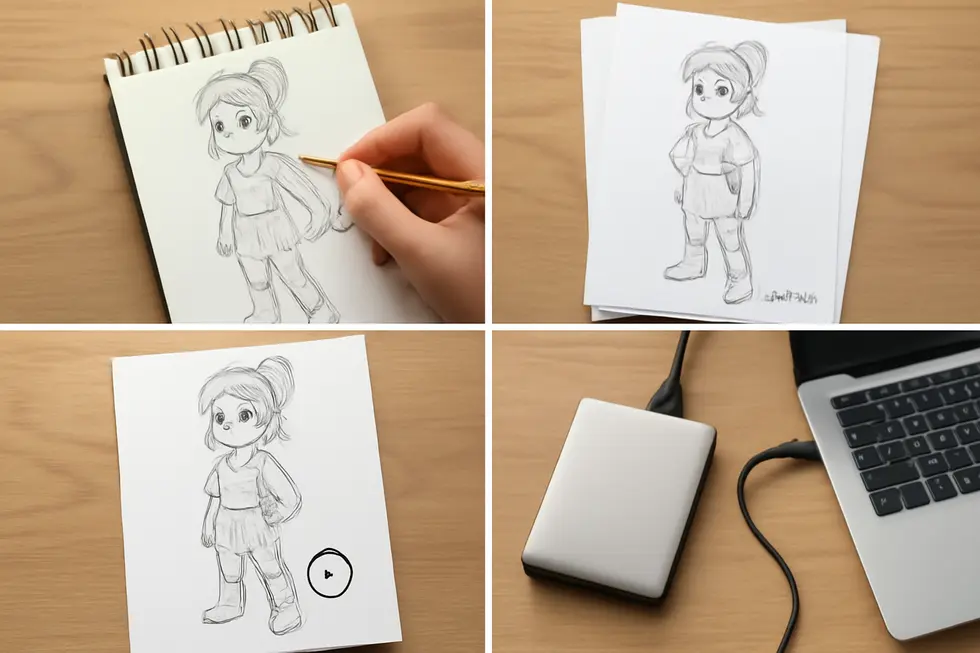
1. Creating Tangible Proof: How Fixing Your Character Secures Free Copyright Protection
Copyright protection for your character begins automatically the moment you fix it in a tangible medium. This means capturing your character in forms such as drawings, scripts, written descriptions, or digital files. Merely having the idea is not enough; the character’s expression must be recorded in a perceivable way to be protected. Including a copyright notice (© Your Name Year) on this work is a simple way to assert your claim and discourage infringement, although it isn’t legally required. Crucially, maintain dated drafts, source files, or other creation evidence to establish your authorship clearly. While registration strengthens legal enforcement, these practical steps can help secure your rights without cost. For deeper details, refer to the U.S. Copyright Office’s Circular 1 on copyright basics and explore strategies aligned with understanding copyright for business owners.
2. Strengthening Your Character’s Ownership with Copyright Notices and Practical Documentation
While copyright protection for your character automatically begins once it’s fixed in a tangible form, using a clear copyright notice is a simple, cost-free way to assert your rights and discourage infringement. This notice typically includes the © symbol, the year of first publication, and your name as the copyright owner. Though not legally mandatory, it signals ownership and professionalism. To further bolster your claim without official registration, meticulously document your creation process by saving dated drafts, sketches, or digital files. Publicly sharing your work with attached notices helps establish a public record of your ownership. Additionally, stay vigilant by monitoring potential unauthorized uses, enabling timely enforcement through takedown requests. For creators interested in exploring formal protections alongside these free measures, the U.S. Copyright Office Circular 1 offers essential guidance. These combined steps effectively reinforce your rights and protect your character without upfront registration fees.
3. Establishing Concrete Proof: How to Secure Free Copyright Protection Through Thorough Documentation
When protecting your character without formal registration, maintaining solid evidence of creation is vital. Start by preserving drafts, sketches, and notes with clear dates to show the timeline of your work. Utilizing the copyright symbol © alongside your name and creation year reinforces your claim, though not legally required. Sending a dated copy to your own email or storing it securely with timestamps can serve as informal proof if disputes arise. Retaining all related research and preparatory materials further demonstrates originality. Remember, copyright safeguards your character’s expression—not just its concept—and avoiding premature public disclosure helps maintain control. While registration offers stronger legal standing, these practical steps build a strong, cost-free foundation. For comprehensive guidance on copyright basics, refer to the U.S. Copyright Office Circular 1 and explore insights on copyright language for business owners.
4. Harnessing Fair Use and Digital Platforms to Fortify Character Protection Without Cost
Copyright protection arises the moment your character is fixed in a tangible form, but maximizing free protection requires strategic action. Understanding fair use—which allows limited, transformative use such as parody or commentary—enables you to publicly develop your character while reinforcing your rights. Sharing your character and related original content on social media and creative communities helps document authorship and build a supportive audience. Always include clear copyright notices and disclaimers to signal ownership and respect for copyright law. Proactively monitor unauthorized uses with free online tools and address infringements through polite requests or platform takedown procedures. Continuously educating yourself on copyright and fair use principles empowers ongoing defense without legal costs. Combining these methods builds a low-cost shield around your creation, leveraging both legal principles and digital connectivity. For further detailed guidance, consult the comprehensive copyright information for books and Corning Library’s copyright and fair use overview (https://pitt.libguides.com/copyright/general-faq).
Chapter 3: The Role of Copyright Registration Versus Free Copyright of a Character
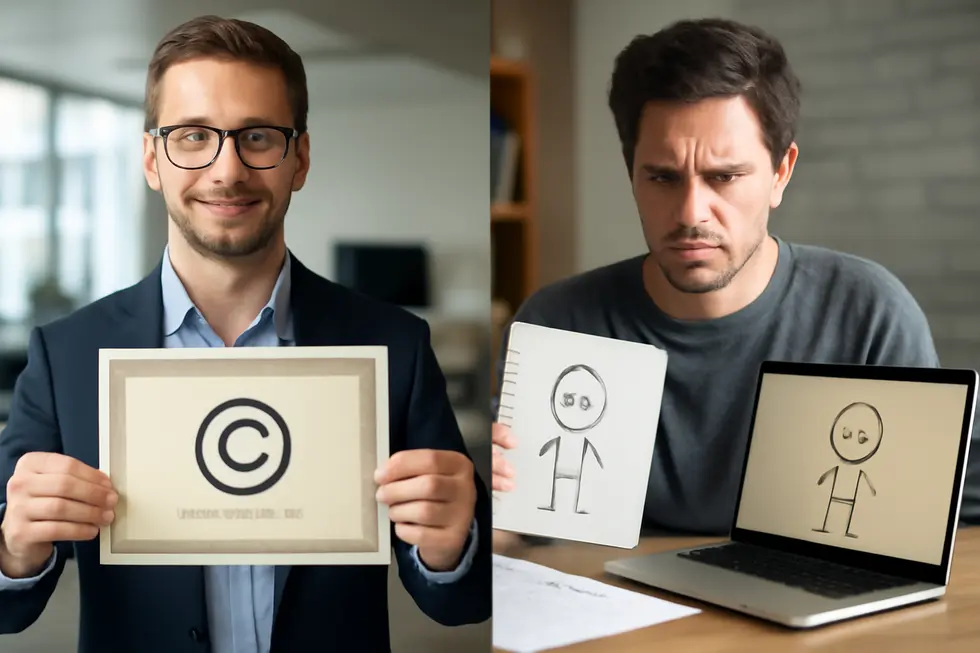
1. Navigating Legal Strength and Enforcement: Why Registration Matters Beyond Automatic Copyright
Navigating Legal Strength and Enforcement: Why Registration Matters Beyond Automatic Copyright
While copyright protection for a character arises automatically upon fixation in a tangible form, registering the copyright amplifies legal power significantly. Registration establishes public proof of ownership, allowing creators to sue for infringement and pursue statutory damages and attorney fees. Without registration, enforcement relies on proving ownership and damages, which can be burdensome and limit legal options against copying or unauthorized use. This gap makes registration crucial in commercial contexts where infringement risks are higher. Copyright safeguards the character’s unique creative expression, not general ideas or traits. Creators seeking legal certainty should consider registration to secure robust enforcement remedies and deter potential infringers. For more on copyright protections, visit copyright information example business.
For detailed guidance, refer to the U.S. Copyright Office Circular 1 “Copyright Basics” (https://nickheimlichlaw.com/copyright-vs-trademark-which-protection-do-you-need/).
2. Navigating Economic and Commercial Realities: Registered Copyrights Versus Free Character Protection
Copyright registration offers creators powerful economic advantages by enabling formal legal enforcement, including suits for infringement and access to statutory damages. This framework fosters exclusive commercial control, allowing rights holders to monetize characters through licensing and merchandising, thus reinforcing brand value. Conversely, free copyright—automatic but unregistered protection—encourages wider cultural use and derivative creativity but limits economic return and legal recourse. This openness may dilute market exclusivity and reduce incentives for heavy creative investment. Emerging technologies like AI further complicate commercial dynamics, challenging traditional protections and raising new legal uncertainties. Balancing registration benefits against free copyright’s openness is critical in shaping incentives, market control, and innovation within creative industries. For detailed legal guidance, consult the U.S. Copyright Office Circular 1.
3. Navigating Copyright Protection Amidst AI and Digital Advances in Character Creation
The rise of AI and digital tools is reshaping the balance between free copyright and formal registration for characters. Copyright law requires human authorship, so purely AI-generated characters without meaningful human input cannot be registered or protected under U.S. law. This creates uncertainty as AI-assisted creations blend machine output with human creativity. While free copyright automatically applies once a character is fixed in tangible form, registration remains essential to secure enforceable rights, such as statutory damages. Technological advances also intensify debates on fair use, especially where AI trains on copyrighted works. Additionally, extended copyright terms and digital enforcement tools influence whether characters can enter the public domain or be freely used. Creators must carefully weigh authorship, registration, and fair use considerations as technology blurs traditional boundaries. For a deeper legal perspective on AI-related copyright issues, see the U.S. Copyright Office’s stance on AI and authorship. To explore related concepts, visit our guide on copyright law and public domain.
4. Balancing Cultural Sharing and Legal Protection: Societal and Global Views on Character Copyrights
Copyright registration and free copyright embody contrasting societal and geopolitical values regarding creative characters. Registration secures creators’ economic and moral rights, empowering them to control usage and gain financial rewards, which encourages ongoing innovation. Conversely, free copyright or open licensing fosters cultural sharing and creative remixing without formal barriers, enhancing accessibility but potentially limiting creators’ direct earnings. Globally, legal traditions diverge: common law countries prioritize registration and enforce economic rights, while civil law nations emphasize moral rights alongside economic interests. Emerging challenges, such as digital personhood and realistic AI-generated characters, complicate this balance, requiring new frameworks beyond traditional copyrights to protect identity and authorship on a global scale. This complexity highlights how societal values and international legal variations shape the options authors have when protecting their characters freely or through registration. For more on how copyright laws affect cultural and business contexts, see copyright information example business. Additional insights on these evolving issues are discussed at Digital Personhood Enforcement Proposal (MusicTech Solutions).
Chapter 4: Limitations of Free Copyright: Challenges When You Copyright a Character for Free with AI-Generated Content
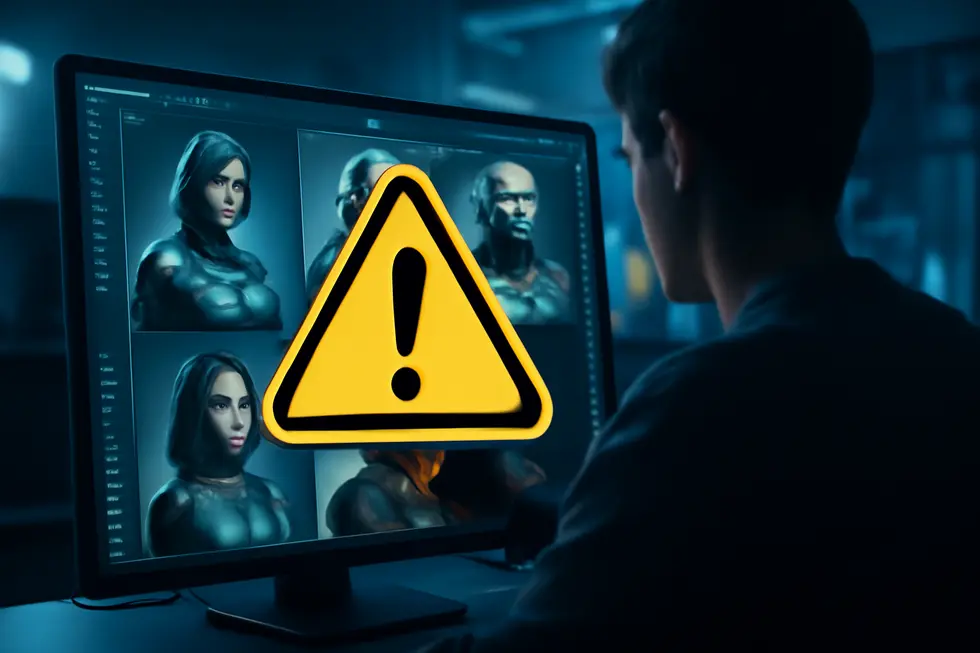
1. Navigating Legal and Technological Barriers in AI-Generated Character Copyrights
Copyright law requires human authorship, presenting a core challenge for characters created solely with free AI tools. Without significant human creative input, these AI-generated characters cannot be copyrighted, leaving their protection legally uncertain. Additionally, ambiguity surrounds ownership since AI lacks legal personhood—users or developers may claim rights, but no clear standard exists. The use of expansive training datasets often causes AI to replicate copyrighted elements, risking infringement if characters resemble protected works. Derivative creations without authorization further complicate claims, while licensing terms attached to AI tools may restrict commercial use or exclusivity. As courts continue to refine AI’s legal status, creators should ensure meaningful human contribution and carefully review terms to assert ownership. This deepens the complexities of free copyright protection amid evolving technology and law. For further details, see AI copyright challenges and explore nuances of copyright language for business owners.
2. Navigating Economic Risks and Ownership Ambiguities in Free Copyright of AI-Generated Characters
The free and automatic copyright protection for characters becomes economically complex when AI is involved. Copyright law centers on human authorship, leaving AI-generated characters in a legal gray zone, which complicates ownership claims and diminishes economic incentives. Moreover, AI models might reproduce elements from copyrighted works within their training data, exposing creators and businesses to costly infringement disputes. Without clear copyright safeguards, monetizing AI-generated characters is uncertain, while companies risk financial penalties for unauthorized use of protected material. This evolving landscape demands new licensing frameworks and financial tools—such as indemnity agreements and insurance—to manage risk and protect economic interests. For a deeper understanding of these legal and economic dynamics, see more on copyright definition and economics and detailed discussions on intellectual property challenges in AI (https://en.wikipedia.org/wiki/Intellectualpropertyinfringementandeconomic_value).
3. Unraveling Global Legal Challenges of Free Copyright on AI-Generated Characters
Copyright law fundamentally requires human authorship, making purely AI-generated characters largely ineligible for protection without substantial human creative input. This is complicated further by AI models “memorizing” copyrighted works during training, risking unintentional infringement when producing similar characters. The lack of transparency and licensing over AI training datasets fuels legal uncertainty over ownership of AI-generated outputs and potential derivative claims. Global jurisdictions differ widely on platform responsibilities and copyright enforcement, resulting in a fragmented landscape. Consequently, claiming free copyright on AI-generated characters involves navigating unclear legal definitions, potential infringement risks, and varying international frameworks. For deeper insight, the U.S. Copyright Office Circular 1 offers authoritative guidance on these evolving issues.
4. Navigating Ethical Dilemmas and Ownership Ambiguities in AI-Generated Character Copyrights
The rise of AI-generated characters introduces complex ethical and societal challenges linked to free copyright protection. Since copyright law traditionally requires human authorship, AI creations often remain unprotected, creating ownership ambiguities between users, developers, and the AI itself. This legal uncertainty complicates enforcing exclusive rights and risks inadvertent infringement, especially as AI models are frequently trained on copyrighted materials without explicit consent. Such practices raise ethical concerns about fairness, creator compensation, and privacy. To address these challenges, it is crucial to add meaningful human input, clearly define rights in agreements, and stay informed on evolving laws. Understanding these nuances is essential for protecting AI-assisted creativity responsibly. More on these complexities can be found in this resource on copyright language for business owners. For broader legal insights, consult the U.S. Copyright Office Circular 1 “Copyright Basics”: https://pitt.libguides.com/copyright/general-faq
Chapter 5: Legal Implications and Enforcement Options When You Copyright a Character for Free

1. Understanding Your Exclusive Rights and Challenges When Copyrighting a Character for Free
When you copyright a character, you instantly gain exclusive rights over its original expression, controlling reproduction, distribution, and derivative works. This protection applies regardless of commercial use or payment—copyright arises automatically once your character is fixed in a tangible form. However, copyright covers only the original elements, not mere ideas or concepts behind your character. You can enforce your rights by requesting removal of unauthorized uses or pursuing legal action, though litigation can be complex and costly. Fan creations or derivative characters you develop also enjoy protection if sufficiently original. While fair use may limit enforcement in specific instances, such as incidental elements, it is narrowly defined and context-dependent. For an in-depth overview of these protections and limitations, visit this resource on copyright distribution rights and enforcement options. Further legal insights are available at Ex Astris Scientia, providing valuable examples on fan works and derivative characters.
2. Navigating Enforcement Strategies and Legal Protections Without Formal Registration
Copyright for a character arises the moment it is fixed in a tangible form, granting automatic protection without fees. However, enforcing these rights without formal registration is challenging. While you can send cease-and-desist letters to stop unauthorized use or pursue lawsuits seeking actual damages and injunctions, you cannot claim statutory damages or recover attorney fees without registration. Digital protections like DMCA takedown notices offer recourse against online infringements. Yet, enforcement remains costly and less comprehensive compared to registered copyrights. Originality and tangible fixation are essential, and AI-generated characters face extra scrutiny. To strengthen your position, keep thorough documentation of your creation process. For more on legal frameworks protecting creative works, consider this detailed copyright information for books. See further details on recent enforcement challenges in the digital arena here.
3. Navigating Fair Use and Non-Commercial Boundaries in Free Character Copyright Protection
Navigating Fair Use and Non-Commercial Boundaries in Free Character Copyright Protection: When copyrighting a character without formal registration, fair use and non-commercial factors heavily shape the legal landscape. Fair use allows limited use of copyrighted characters if the use is transformative, educational, or non-commercial and does not harm the original’s market. However, even if use is free, rights holders may act against copying that dilutes their brand or competes commercially. The degree of transformation, amount used, and market impact influence enforcement likelihood. While cease-and-desist letters and DMCA notices are common tools, rights holders often balance enforcement with community goodwill. Understanding these nuances helps creators protect freely used characters while minimizing infringement risks. More on copyright basics is available here. For deeper insight, see the Public Knowledge overview on fair use.
4. Effective Enforcement Tactics and Navigating Legal Challenges Without Formal Registration
Copyright protection for your character begins automatically once it exists in a tangible form, but enforcement without formal registration has limitations. Understanding your rights is crucial; while registration offers stronger legal remedies, practical strategies can help protect your work. Using technology such as content detection tools aids in spotting unauthorized uses online, and engaging your fan community to report infringements expands your enforcement reach. Consulting intellectual property attorneys clarifies complex issues like collaborations or AI involvement. Additionally, fostering licensing opportunities encourages cooperation rather than conflict, balancing legal readiness with community goodwill. These proactive steps empower creators to safeguard their characters even without upfront registration. For further details on copyright basics, consult the U.S. Copyright Office Circular 1.
Chapter 6: Practical Tips and Documentation Strategies for How to Copyright a Character for Free
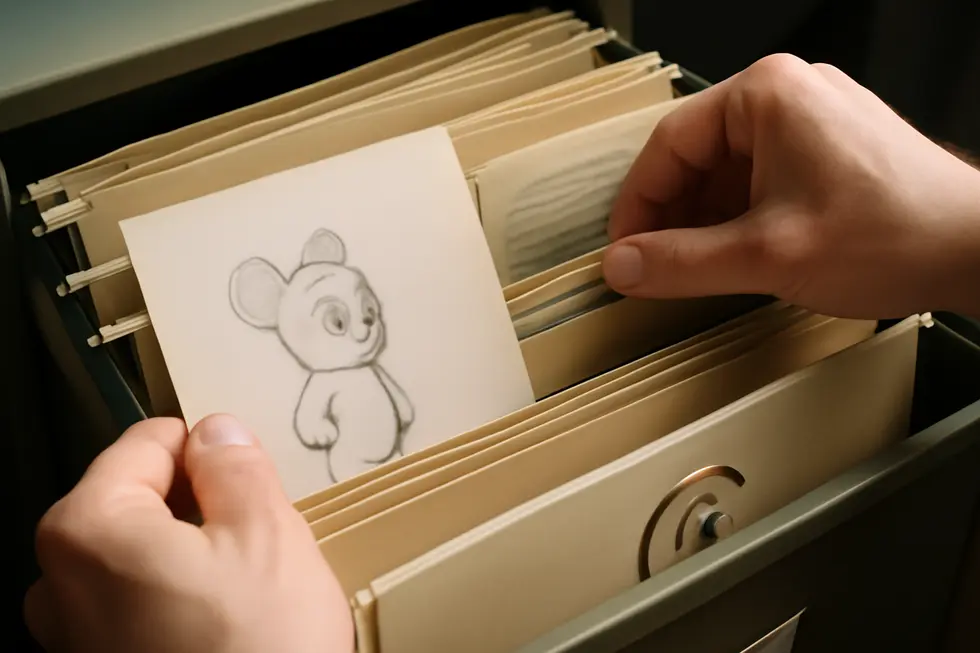
1. Thorough Documentation: Building a Solid Foundation to Protect Your Character’s Originality
Documenting your character’s creation is essential for reinforcing your automatic copyright protection. Keep detailed, dated records of every stage—sketches, written descriptions, personality traits, and revisions—all stored systematically. Using version control or clearly organized folders helps maintain a chronological archive that evidences your original work and timeline. Including contextual details about your character’s unique features and purpose further distinguishes it from existing creations. Simple, free methods like timestamping files or sending sealed emails to yourself can act as informal proof of creation date. Remember, copyright protects your character’s specific expression, not general ideas. Careful documentation fortifies your claim without needing registration fees. For specialized character-related submissions, consult the detailed Unicode Consortium Proposal Guidelines. For more insights on copyright fundamentals, see this copyright definition resource.
2. Establishing Proof of Creation Through Tangible Fixation and Digital Metadata
Copyright protection for a character begins once it is fixed in a tangible form—such as a written description, sketch, or saved digital file. This tangible fixation serves as the primary evidence of your creative work’s originality and creation date. Alongside this, embedding digital metadata into your digital files enhances documentation by invisibly recording ownership details, creation dates, and copyright claims within the file itself. When combined with visible copyright notices, these methods strengthen your ability to assert ownership without formal registration. Maintaining dated records of drafts and iterations complements this approach, creating a timeline of creation that can be invaluable if disputes arise. For creators seeking cost-free protection, mastering tangible fixation and metadata management is foundational. To deepen your understanding of copyright fundamentals, consult copyright basics and official guidance from the U.S. Copyright Office.
3. Leveraging Public Sharing and Informal Documentation to Secure Your Character’s Copyright Without Registration
Copyright protection for your character begins the moment it is fixed in a tangible form. To strengthen your claim without registering formally, publicly sharing your character with clear timestamps on blogs or social media can serve as valuable evidence of authorship and creation date. Complement this with detailed documentation such as sketches, drafts, or dated emails that trace your creative process over time. Using copyright notices or specifying license terms on shared content further asserts your ownership and controls how others may use your work. Though these informal techniques cannot replace the legal benefits of official registration, they establish a practical, cost-free foundation to defend your rights if needed. For more insight on informal copyright strategies, see the copyright information for books and consult resources like the Wikimedia Commons licensing guide.
4. Navigating Legal Complexities and Essential Limits When Protecting Your Character for Free
Copyright protection for original characters begins automatically once fixed in a tangible form, such as written descriptions or digital art, without fees or registration. Still, understanding legal boundaries is crucial: protection covers only the character’s expression, not ideas or concepts. Derivative characters based on existing copyrighted works gain limited rights, protecting only original additions while respecting the original creator’s ownership. Character names often fall outside copyright and may require trademark protection if commercially used. Purely AI-generated characters typically lack copyright, demanding meaningful human input to qualify. To strengthen free protection, document creation carefully—date and archive drafts, notes, and artwork to establish originality and assist any later disputes. While formal registration involves fees, it offers stronger enforcement benefits. Knowing these legal nuances and maintaining thorough documentation underpin effective, cost-free character protection. For further expert guidance, consult the U.S. Copyright Office Circular 1.
Final thoughts
Copyright protection for characters springs automatically from their creation in a tangible medium, offering all business owners a no-cost foundation for safeguarding unique creative works. While this automatic protection secures your character’s originality, understanding the strengths and limits of free copyright is essential for maximizing protection. By applying practical steps such as thorough documentation, prudent use of copyright notices, and recognizing the distinctions between free copyright and formal registration, businesses can confidently defend their characters. Awareness of the challenges posed by AI-generated characters and the available enforcement options without registration further empowers creators to navigate this complex space. Ultimately, safeguarding your characters through proactive, informed efforts ensures these valuable assets contribute meaningfully to your brand’s identity and success.
Your IP is the foundation of your success – let’s protect it together before it’s too late. We can’t wait to help you turn your ideas into legally secured assets.
About us
undefined
